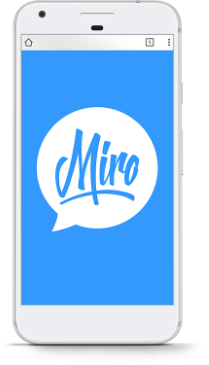It goes without saying: social media can do wonders for your business. You don’t need to see the latest statistics or listen to the most popular marketing guru to know it. Social media can build brand awareness, improve engagement and site traffic, but more important than all, it can carry your message to the right audience.
Many start-ups wonder about where to start when considering social media. Should they use the platform that’s mentioned the most in the industry articles? Or should they go for the one that their friends use the most? The answer is simple, but not very comfortable: find where your audience is and go from there.
With the rise of so many platforms across the vast social media landscape, finding the people you want to connect with has never been more important. It can be tempting to try one or two platforms to see if they are what you need, but this will only be a detour from what it should be the first step in your social media strategy: you need to understand where certain groups are clustering.
Where should I start?
The good news is that you don’t need to target everyone – you just need to connect with the right people. Find out specific details about them such as age, location, motivations and interests; this will help you set priorities for who to contact, as well as be more efficient without getting overwhelmed.
How can you do that? First, use your own demographics. An excellent way to see exactly which demographic you should target on social is to check the demographic makeup of your website visitors. Google Analytics will help tremendously in collecting this kind of information.
This data shows the types of people who are currently interested in what you have to say on your website, which is a good indication of your ideal social audience.
Secondly, spend some time taking a closer look at your product or services; treat it as if it’s the first time you see it. Who is it for? What types of people would benefit the most if using your product or services? What kind of hobbies would that person have? Write it all down to the last detail and you’ll see that, soon enough, a clear persona of your target audience will emerge. Pair your business data with the Google Analytics data to define your brand’s social media strategy.

So many choices, so little time…
Now that you’ve identified your target audience, you need to discover their main social media outlets. As you can imagine, different demographic groups prefer different social media platforms. Plus, each channel tends to serve a different purpose – brand awareness, engagement, conversions, site traffic, etc. With this in mind, it should become easier and easier to choose the right social media platform.
Another bit of good news is that social media channels have their own statistics on their users, so you will know right from the beginning the audience you will be targeting. Take into account platforms like Facebook, Twitter, Instagram, Snapchat, Pinterest, LinkedIn, Goodreads, as well as other less-known channels. Find where people take their information from and where they talk about products like yours — that is where you want to be. Because, in the end, it doesn’t matter how creative and entertaining your Facebook stories are if your prospective clients aren’t there to see them. You can find a good social media demographic segmentation here.
For your social media strategy to really make a difference, you need to understand right from the start that each platform requires a different approach. Take the time to develop a plan for each social media outlet. Of course, this will require testing and analysis, to establish optimum posting times, content guidelines, frequency, and other important factors. Once you have the final plan, stick to it. Don’t just copy a post from one platform to another, thinking that nobody will know. A trivial strategy will bring trivial results.
All in all, success in social media takes time, commitment and perseverance. The noticeable results won’t come overnight, but knowing your audience down to the last detail and choosing your social media platforms carefully is surely the best way you can take to reach your goals.

